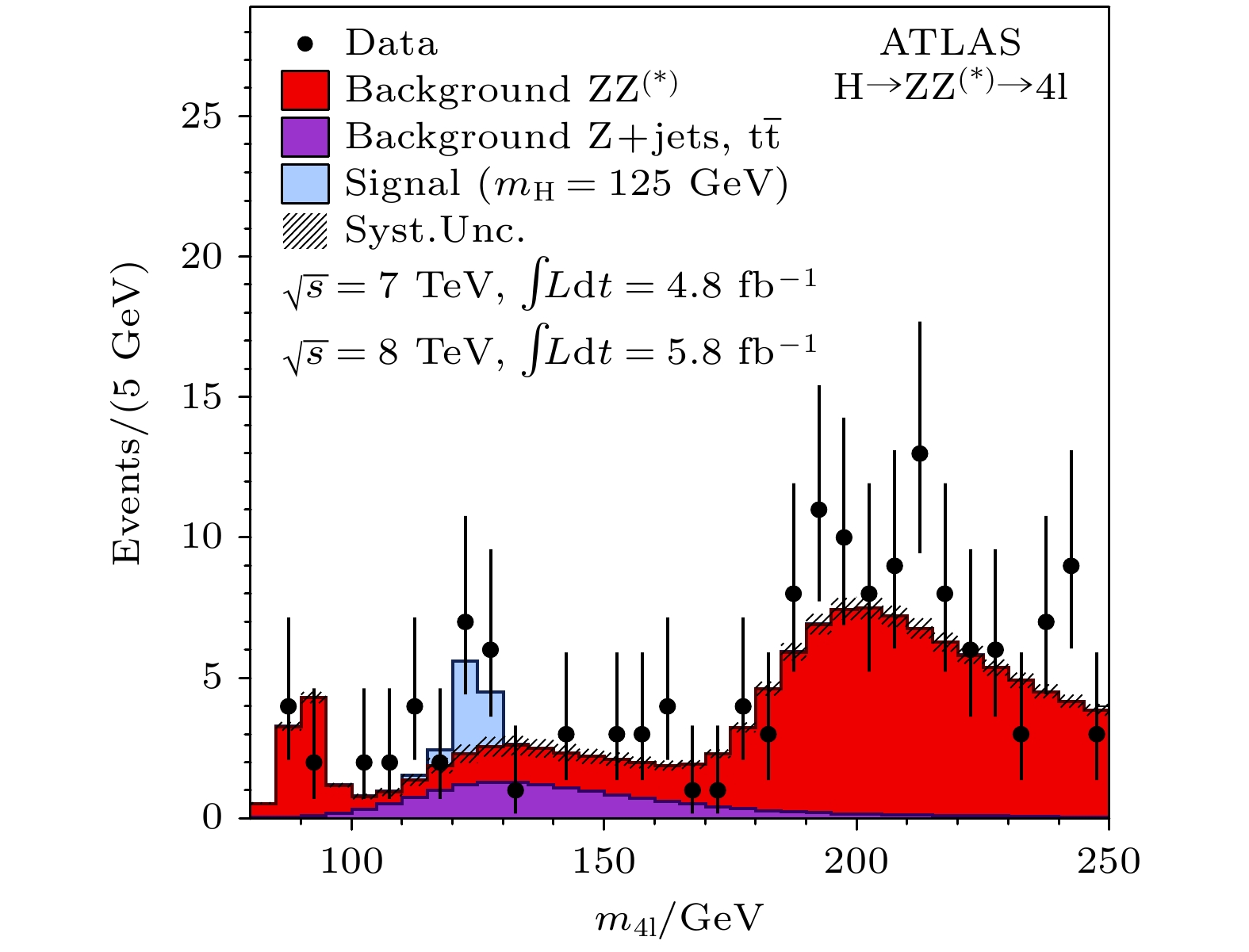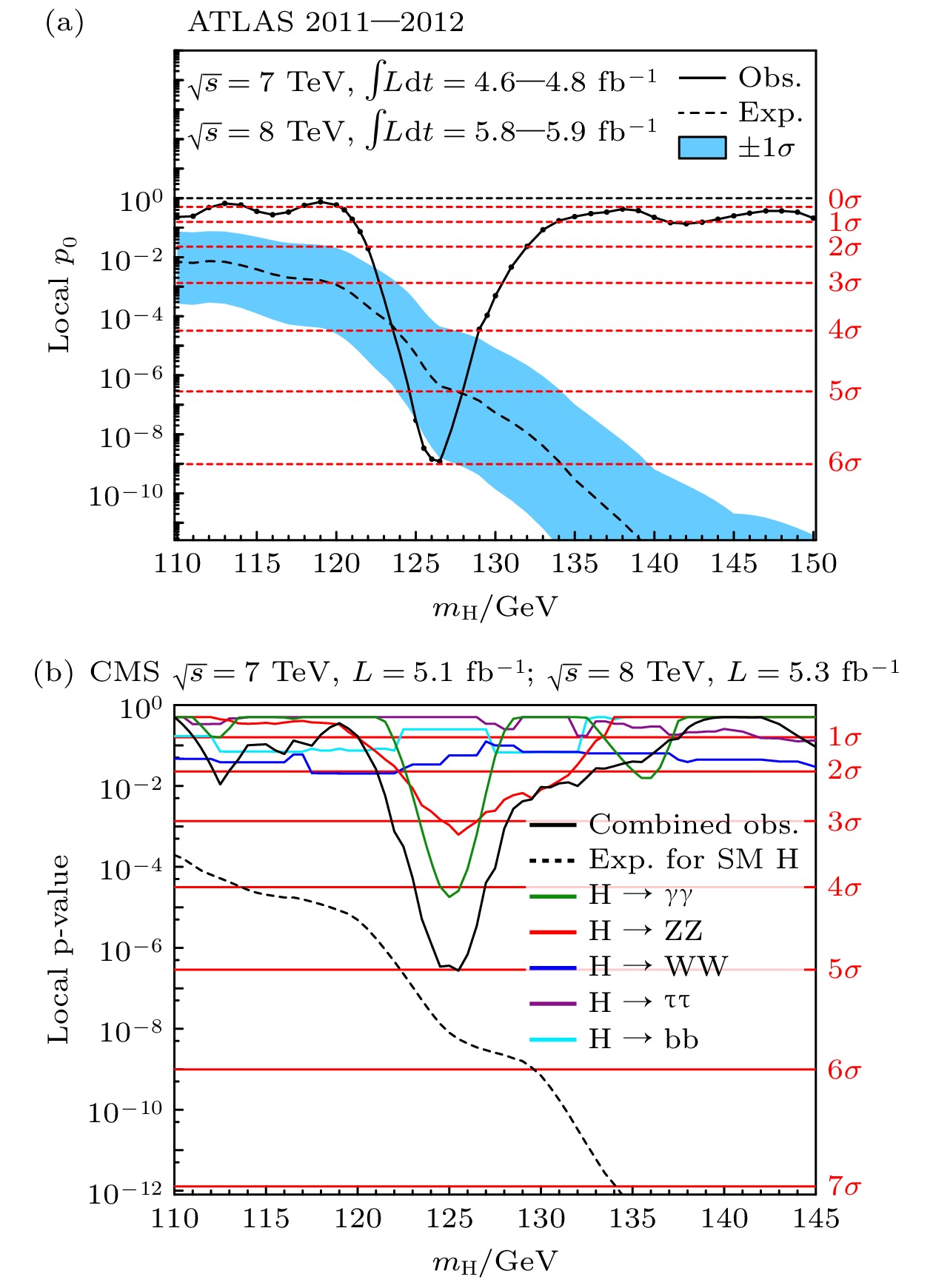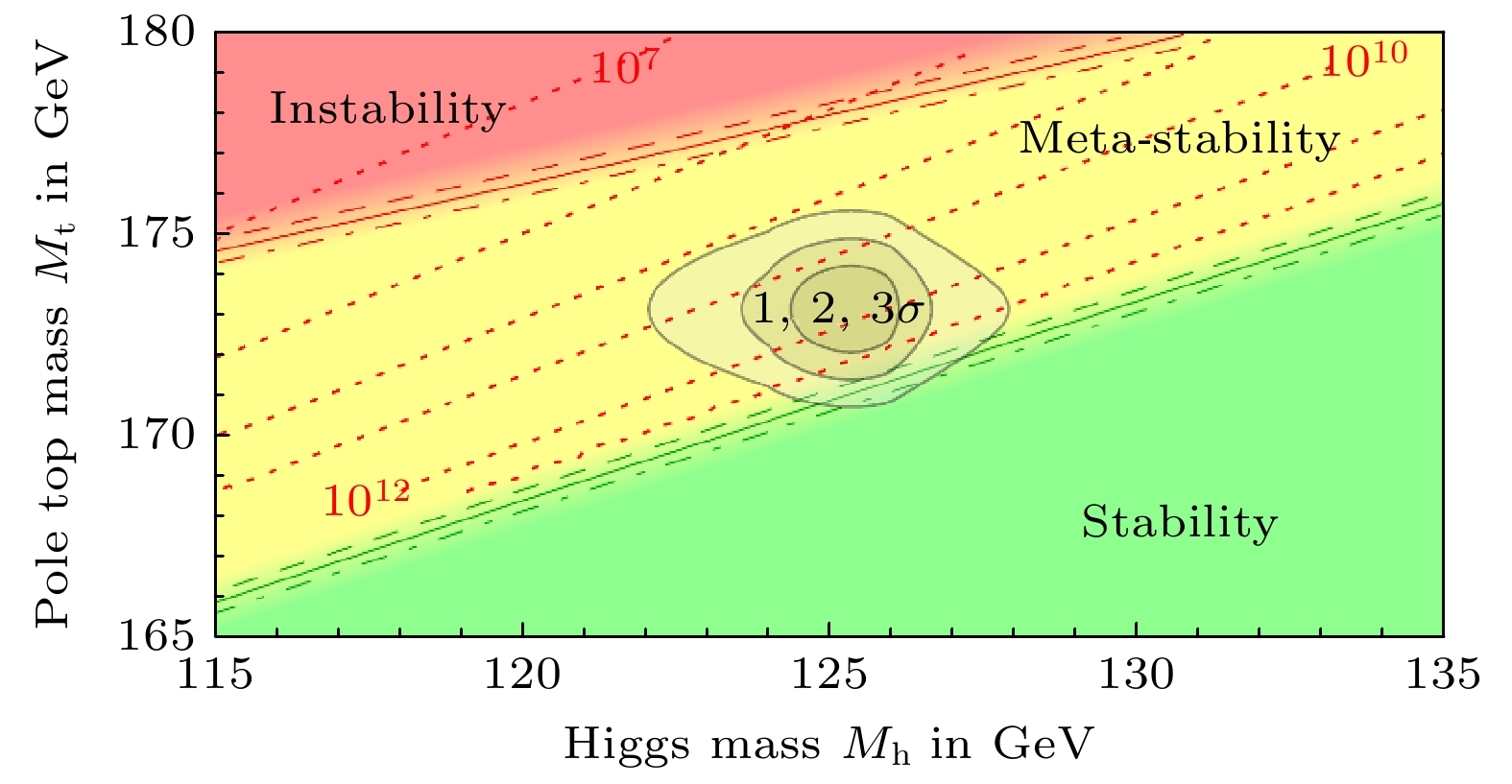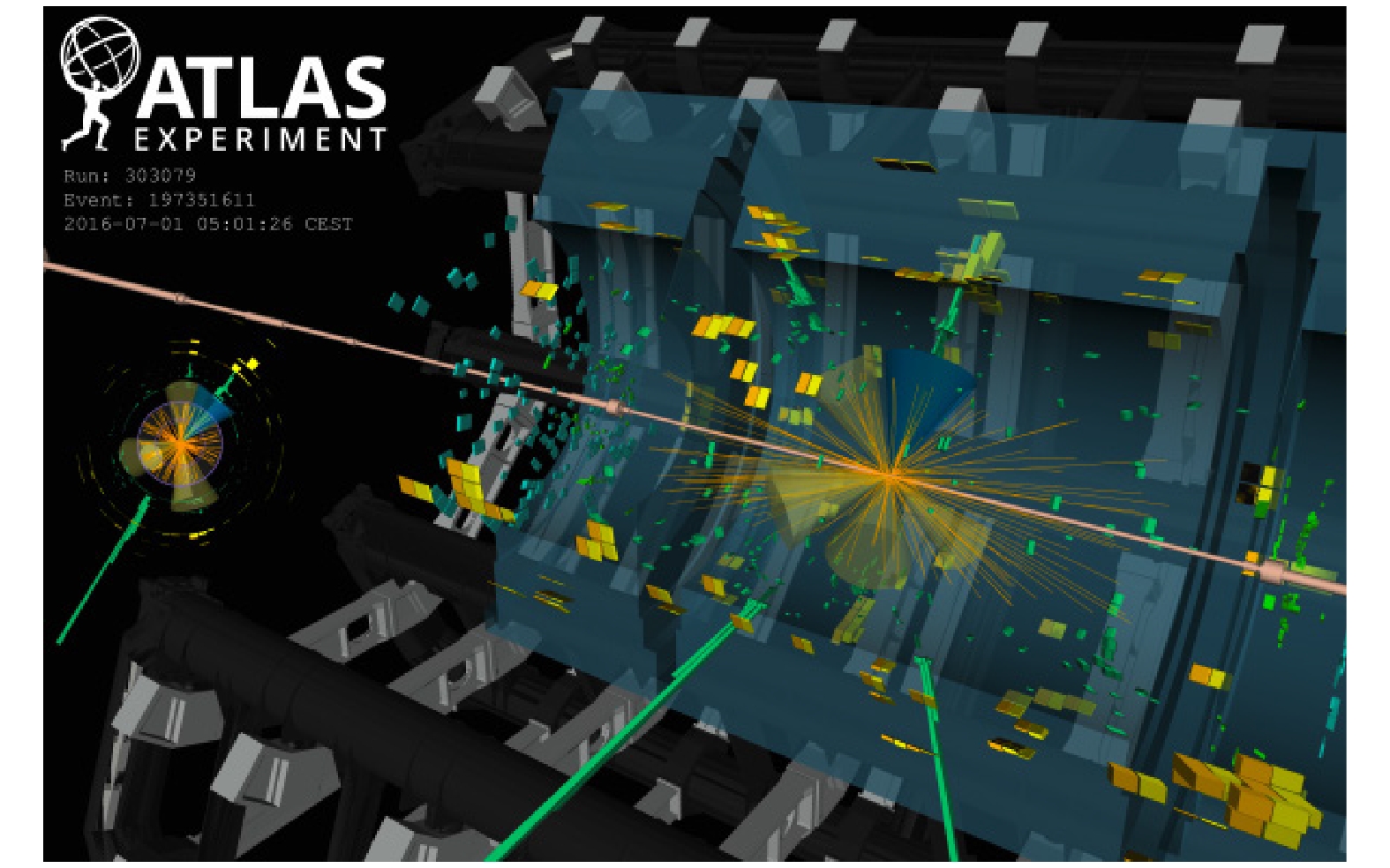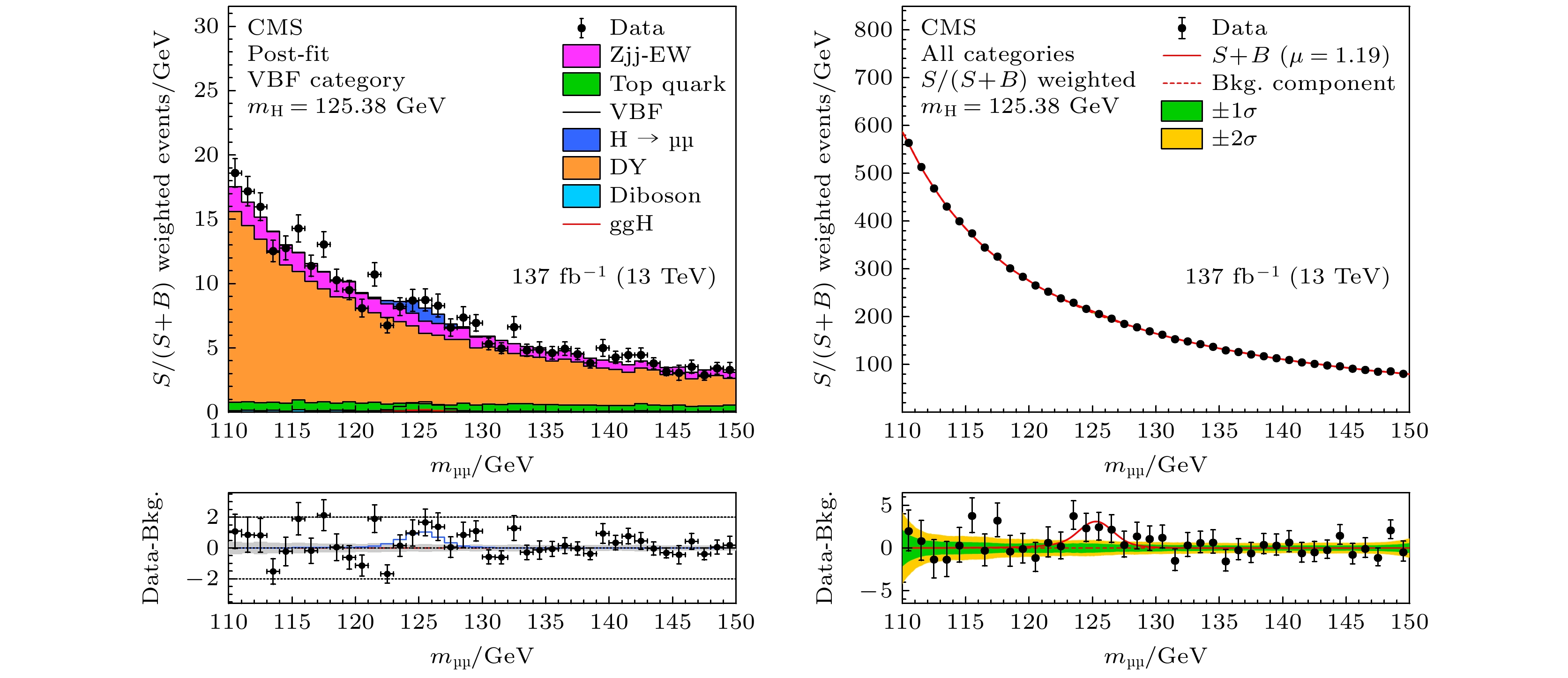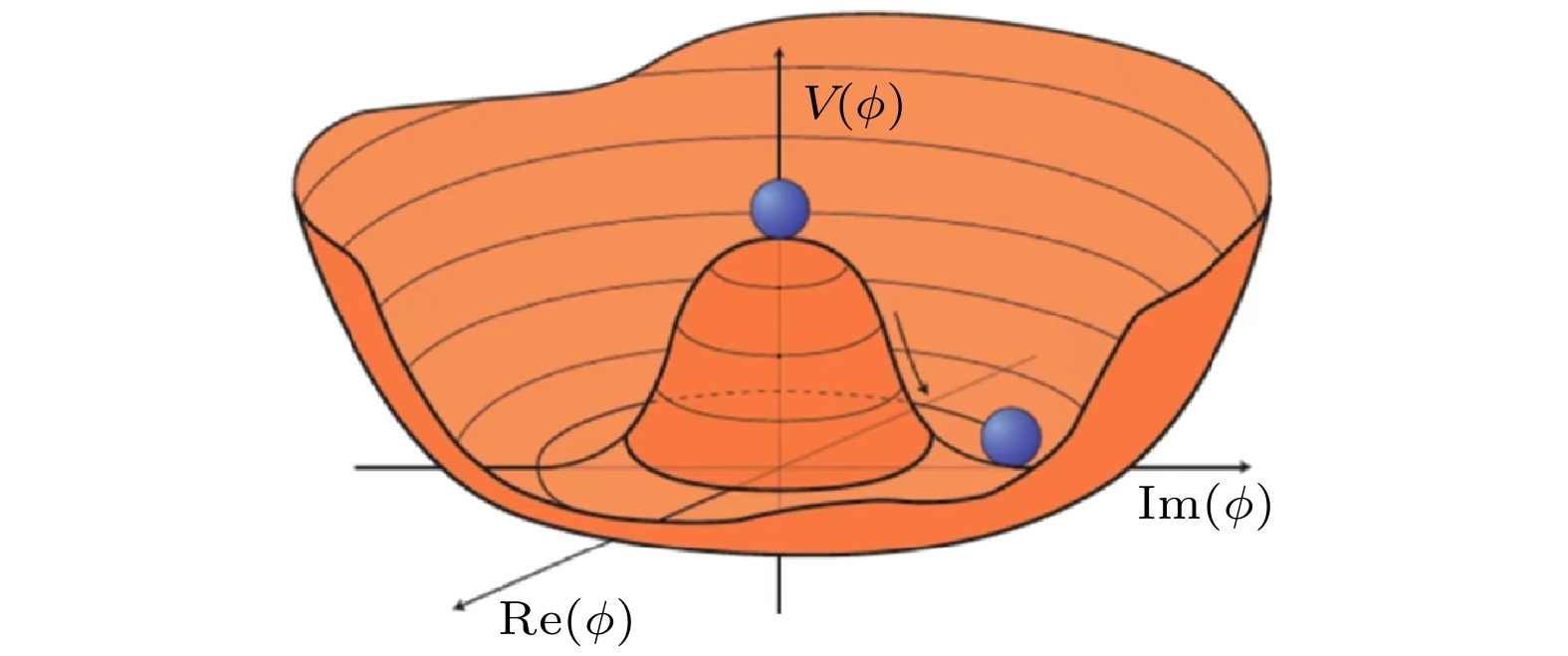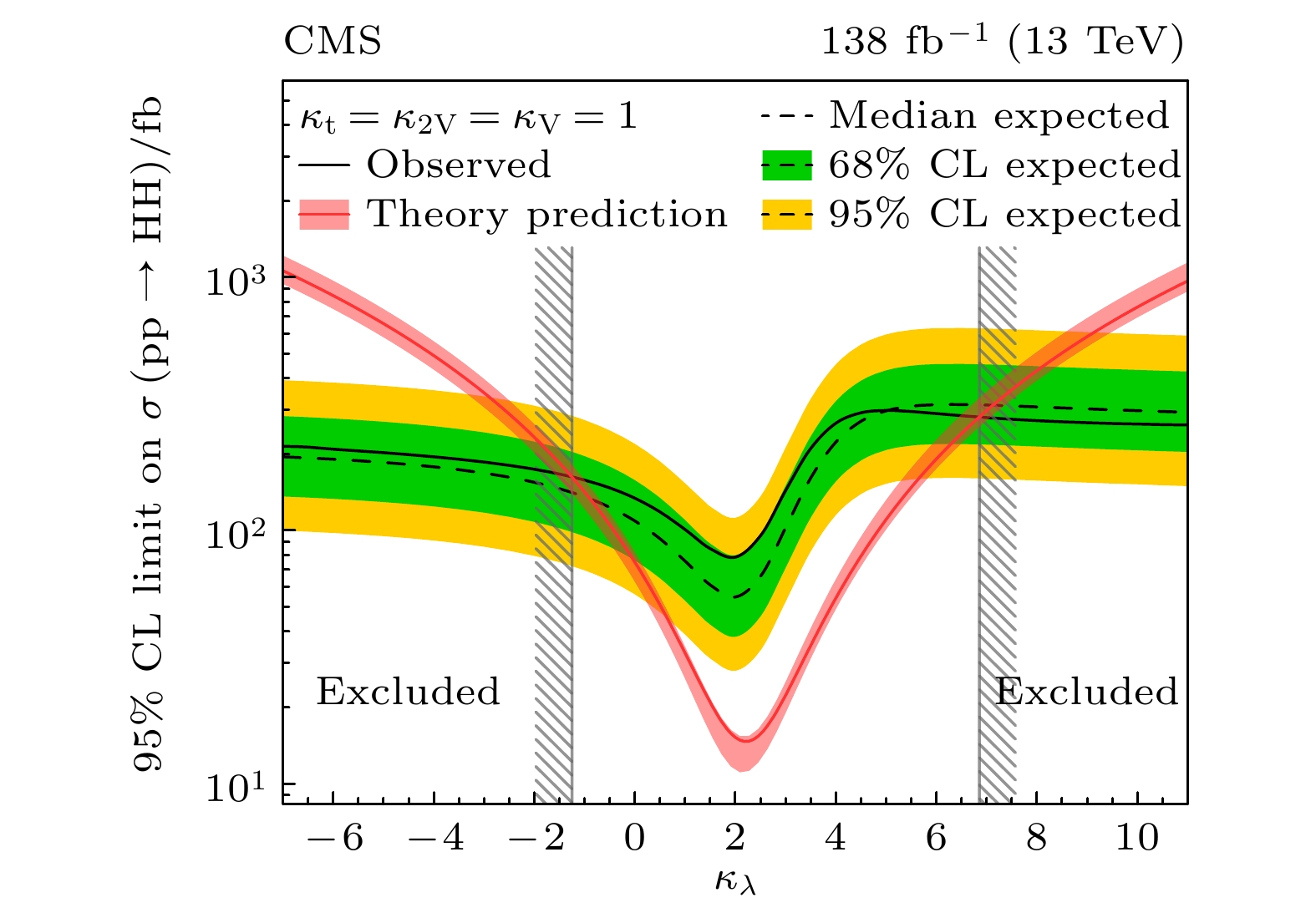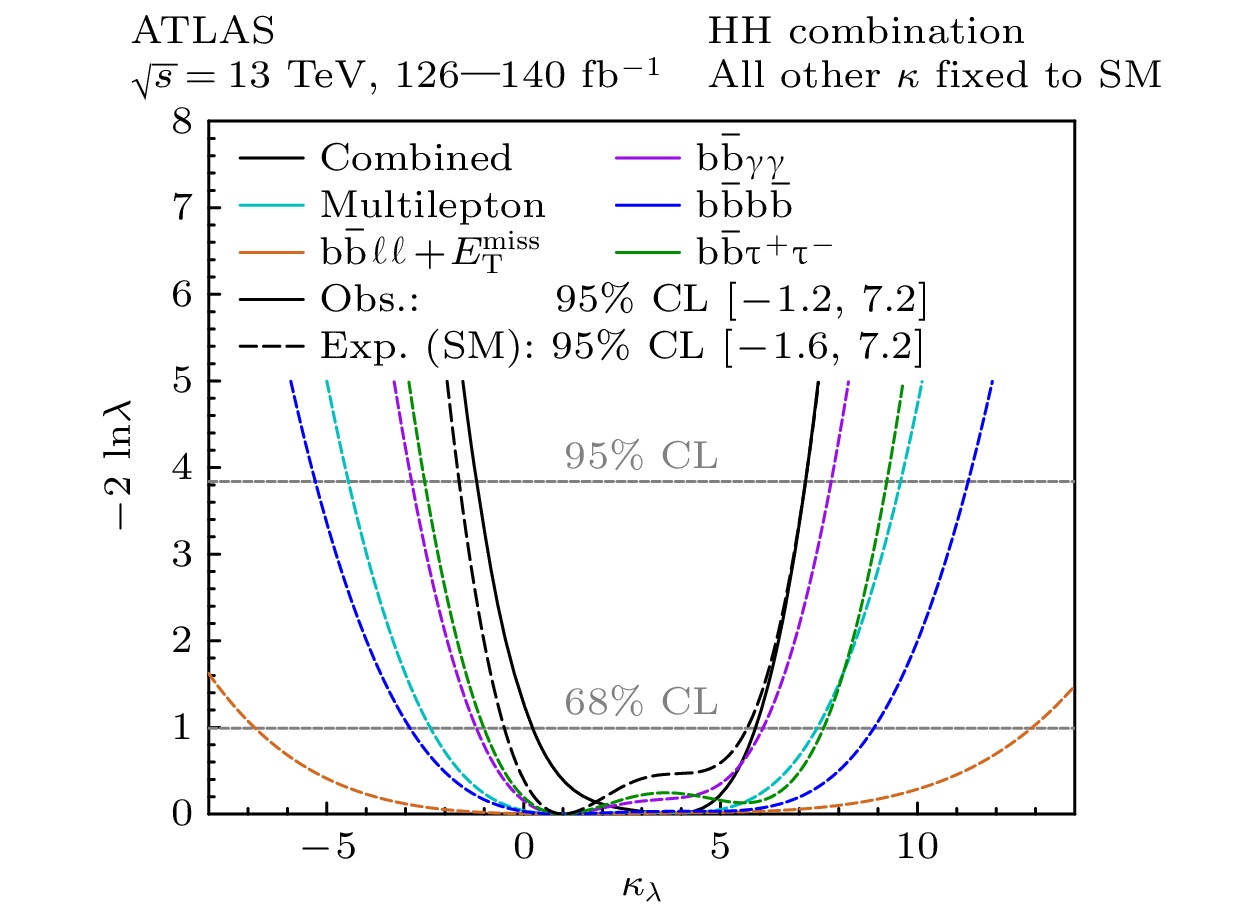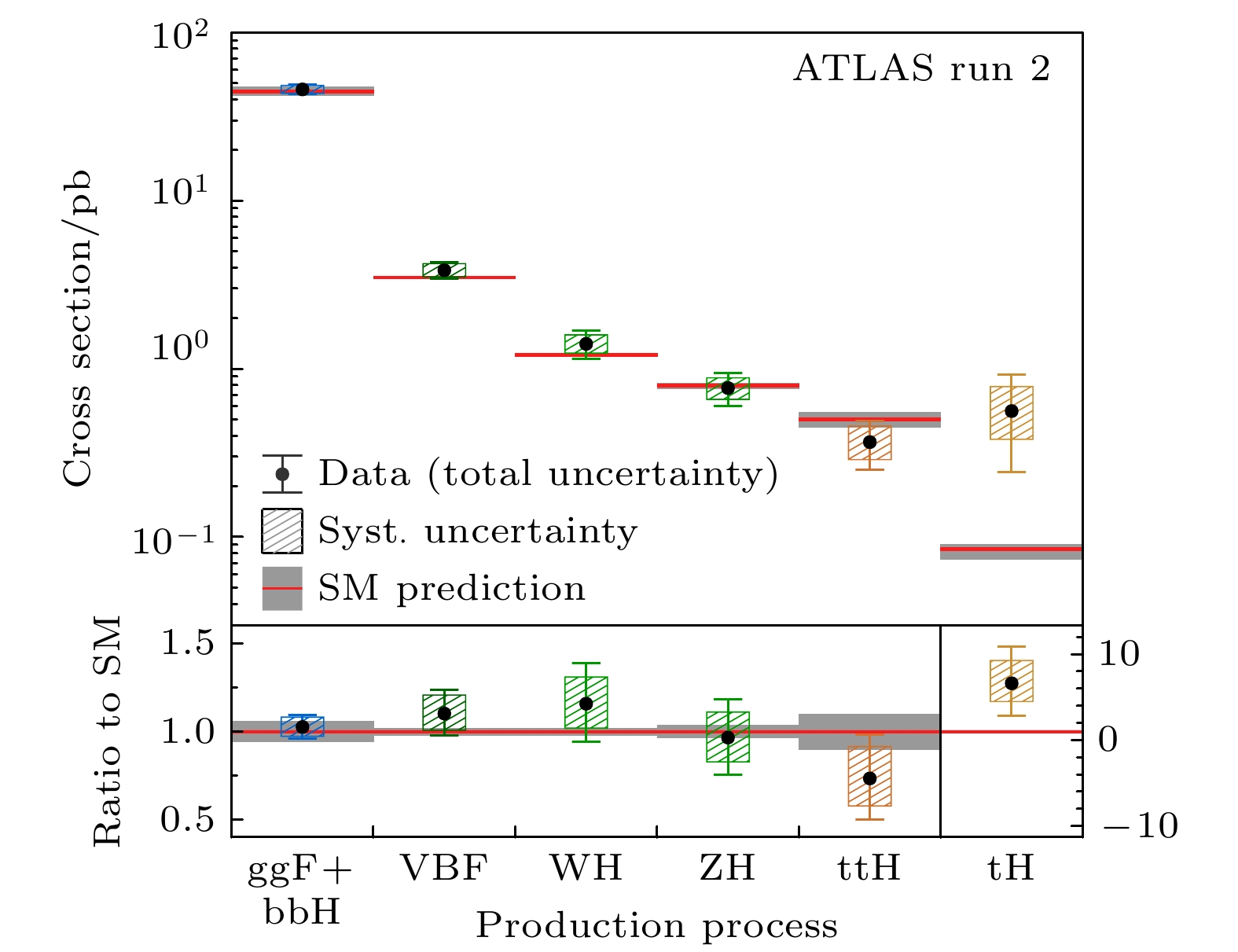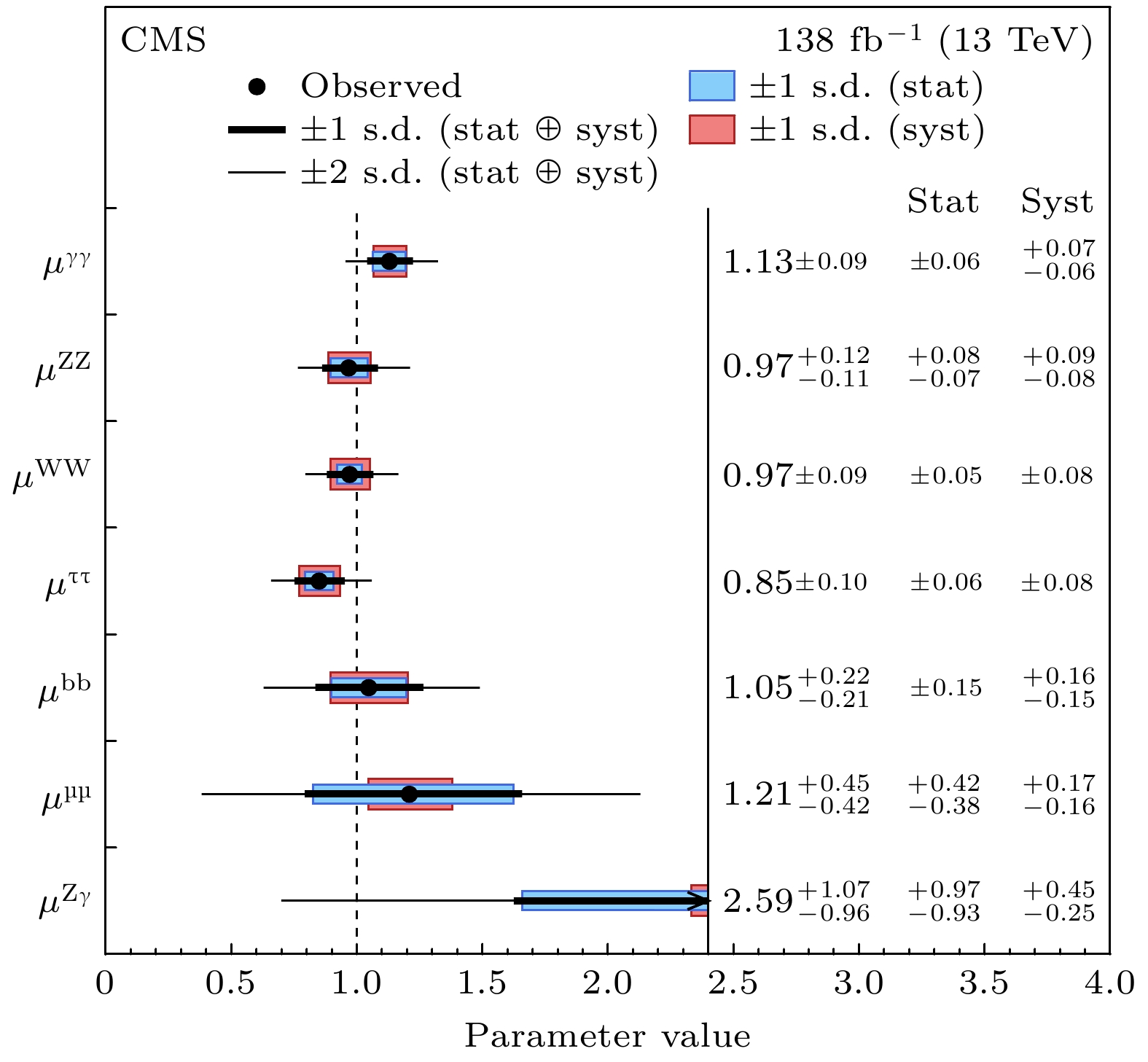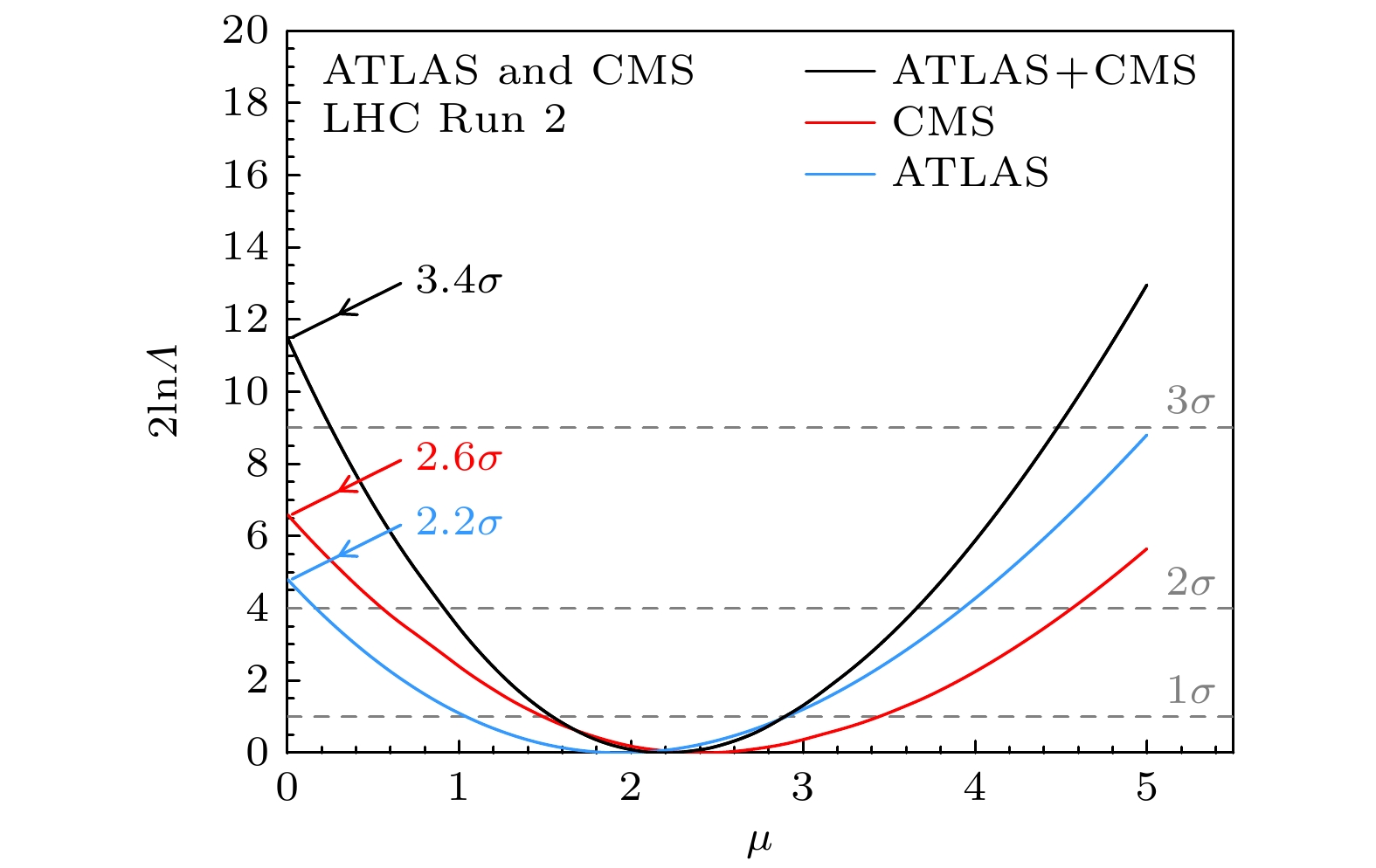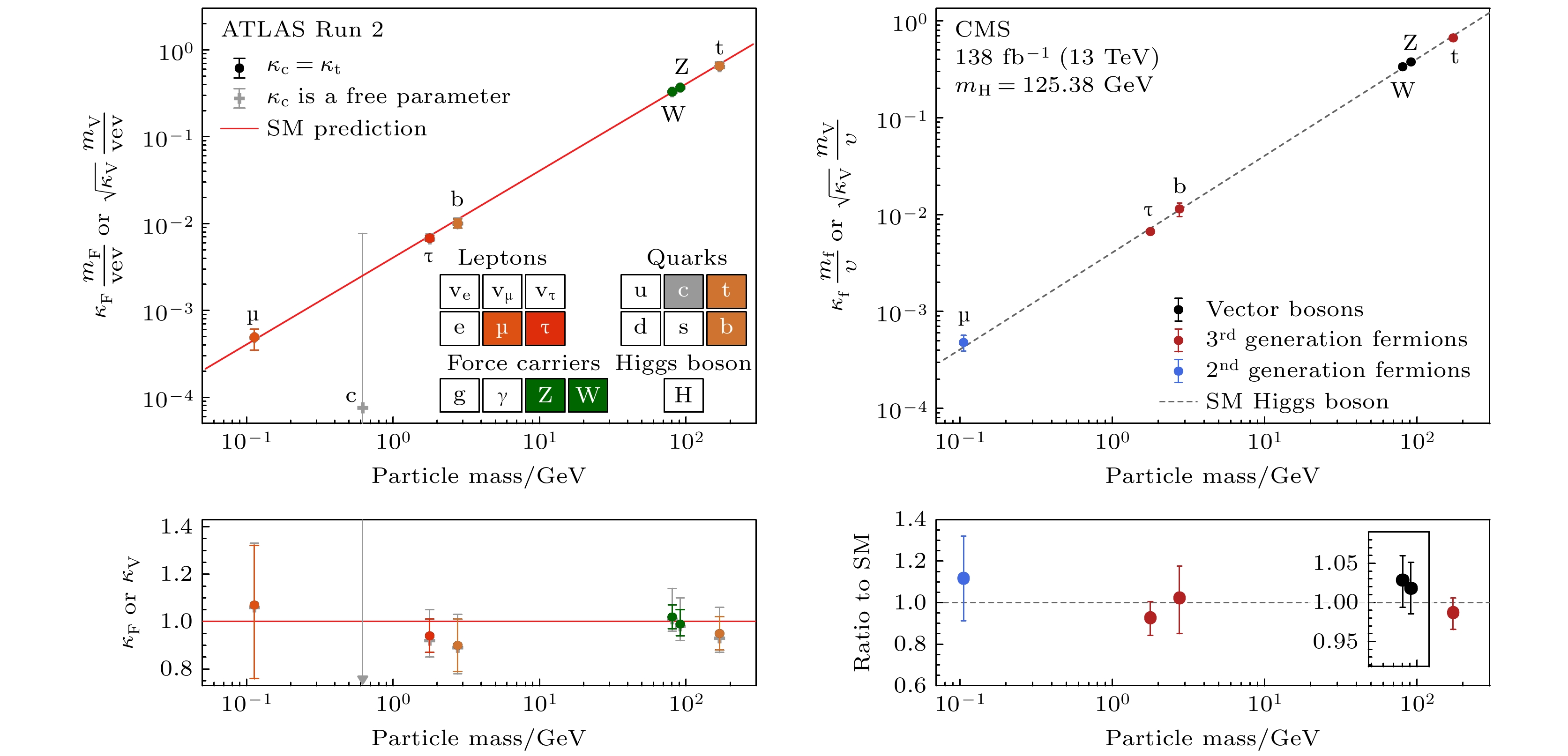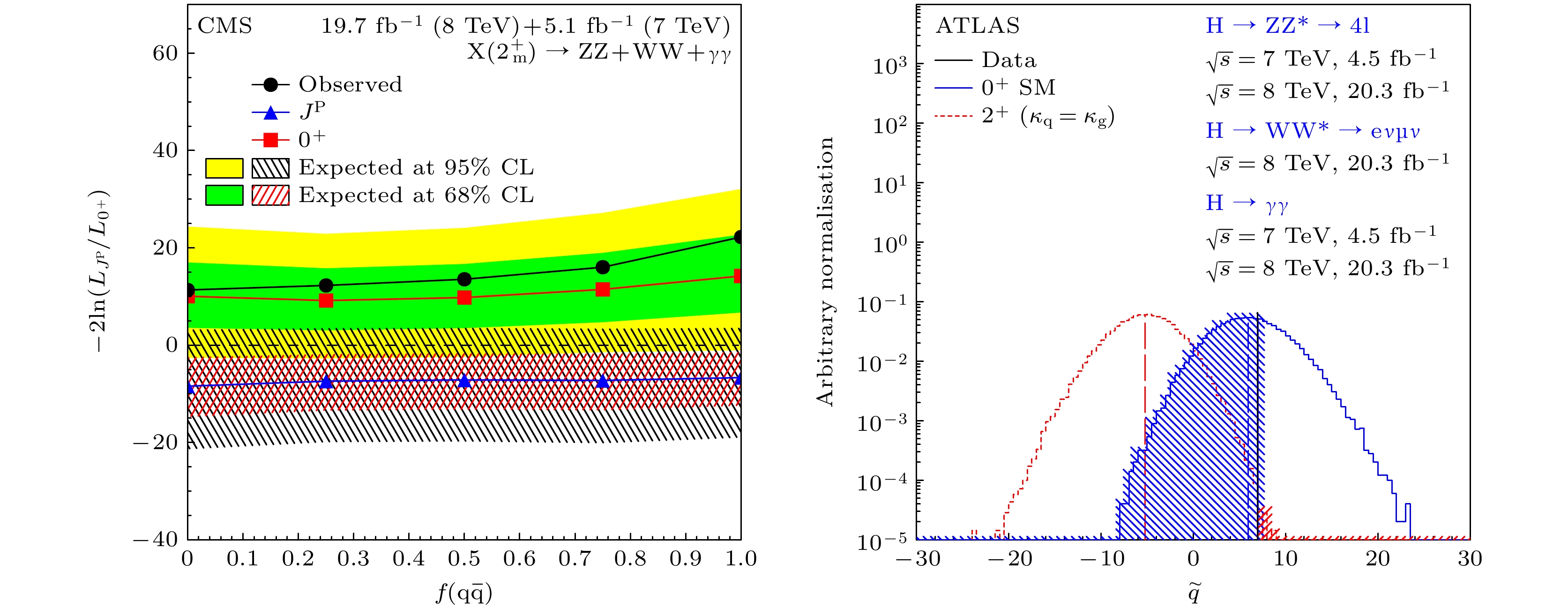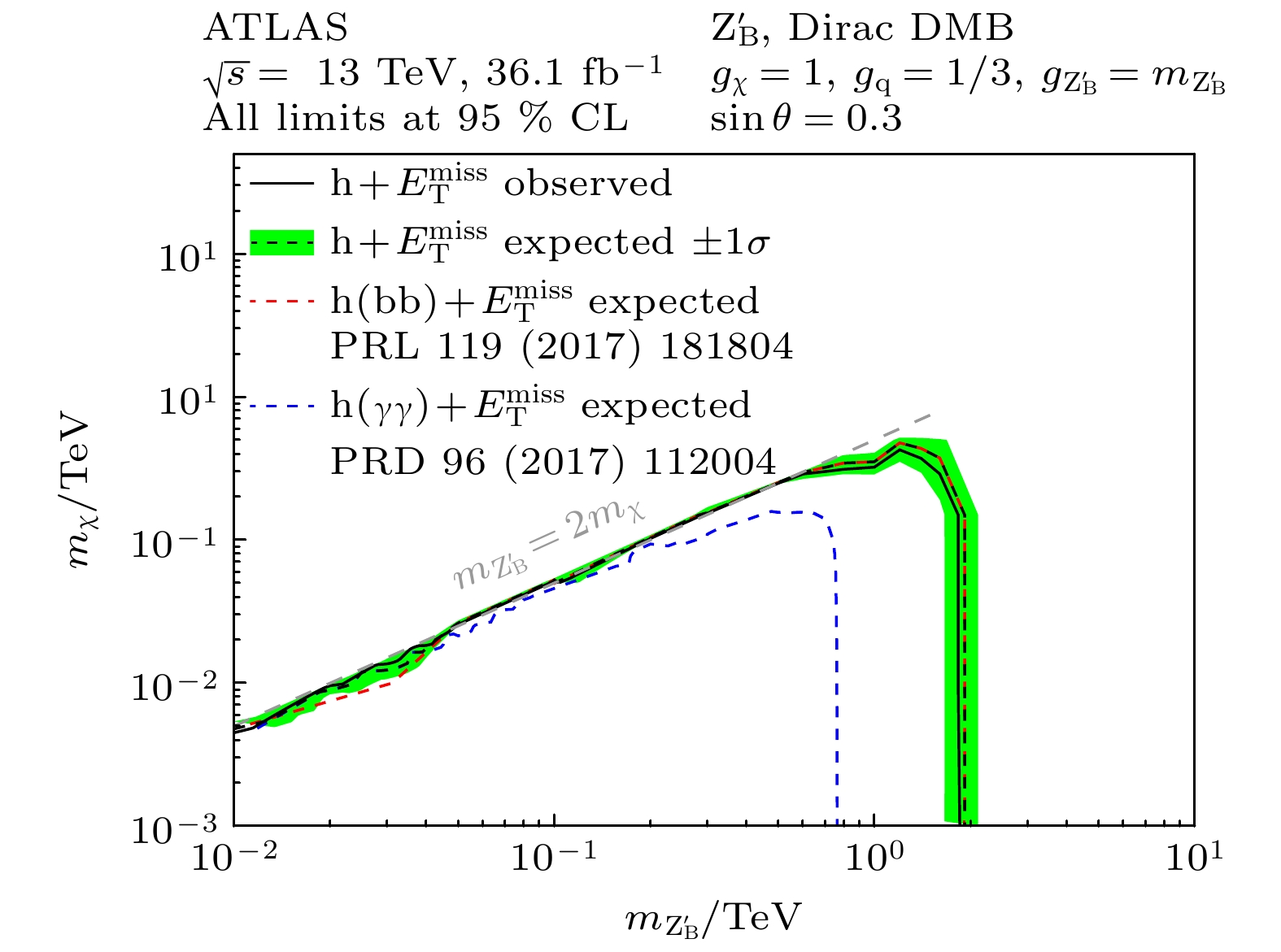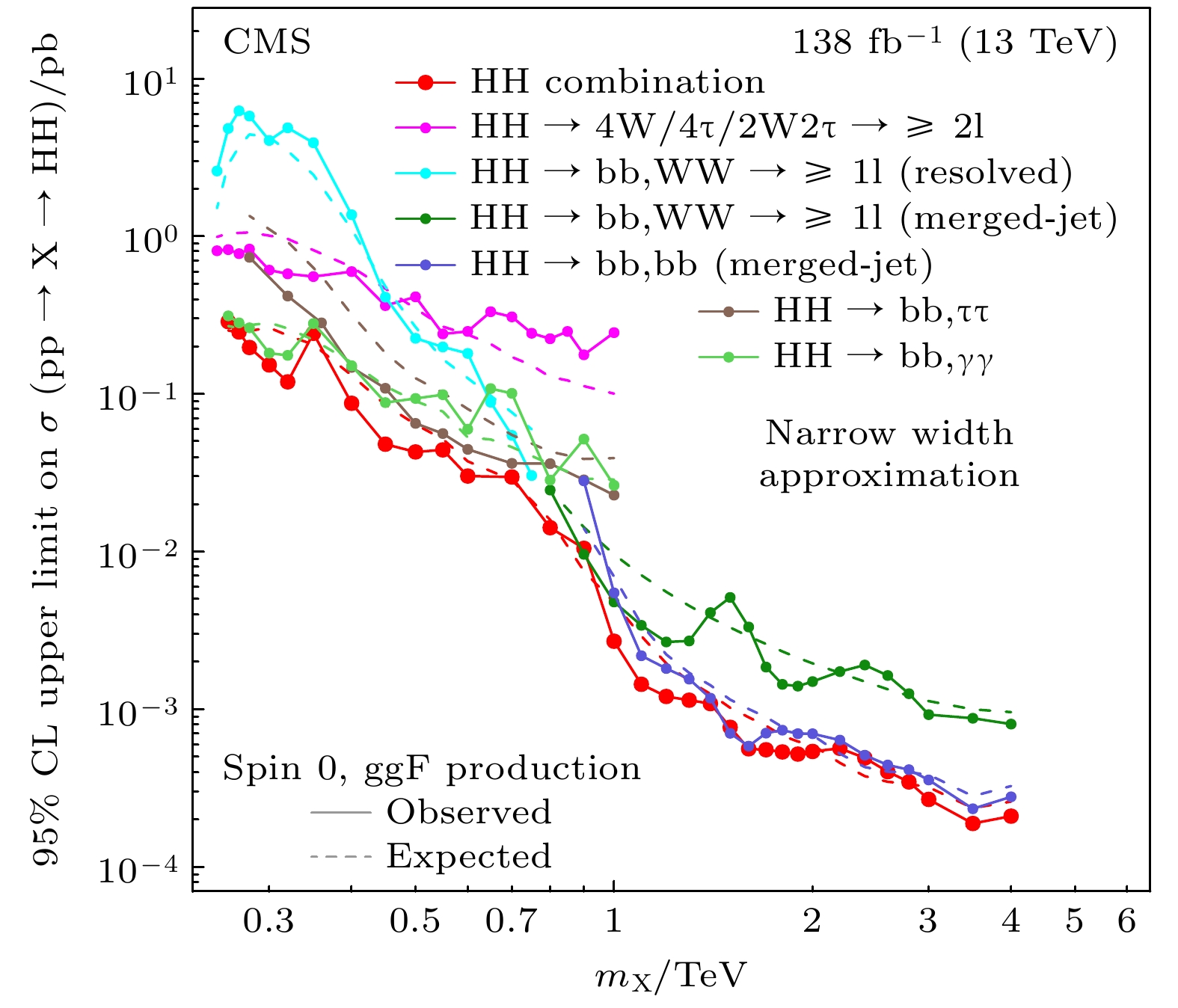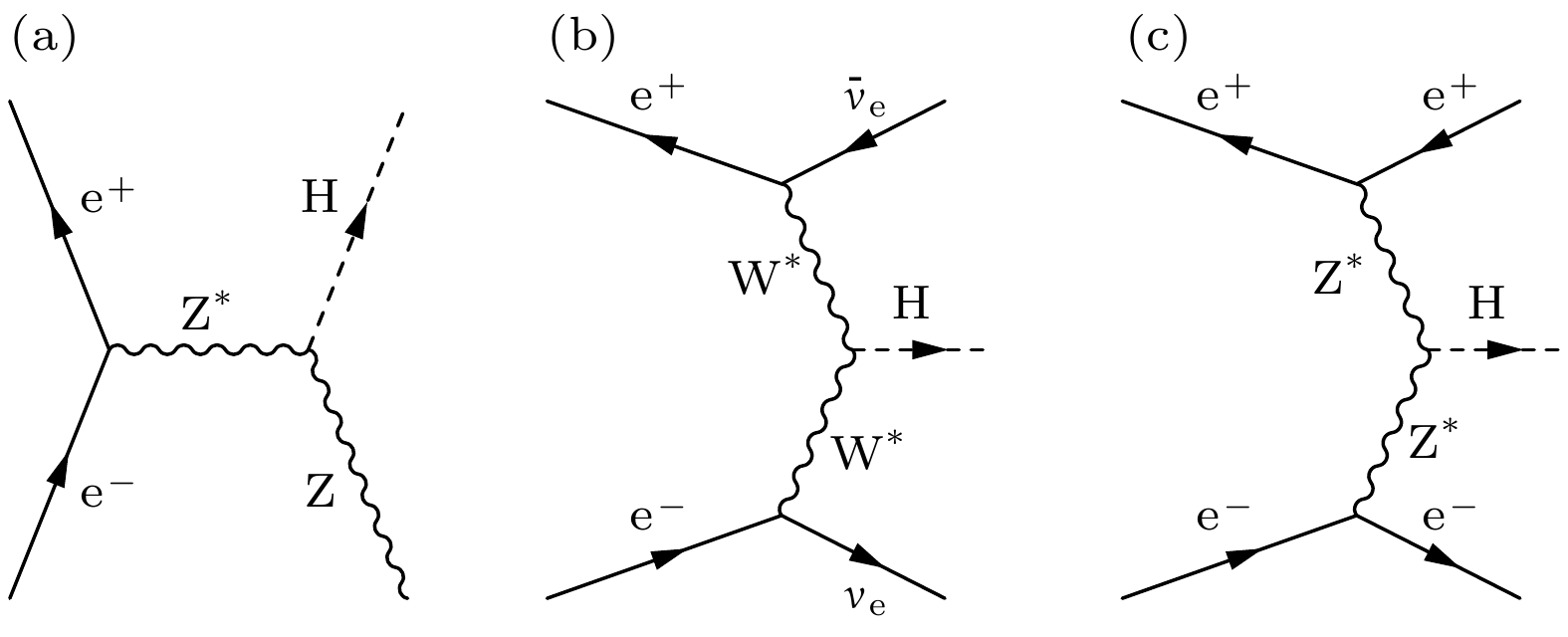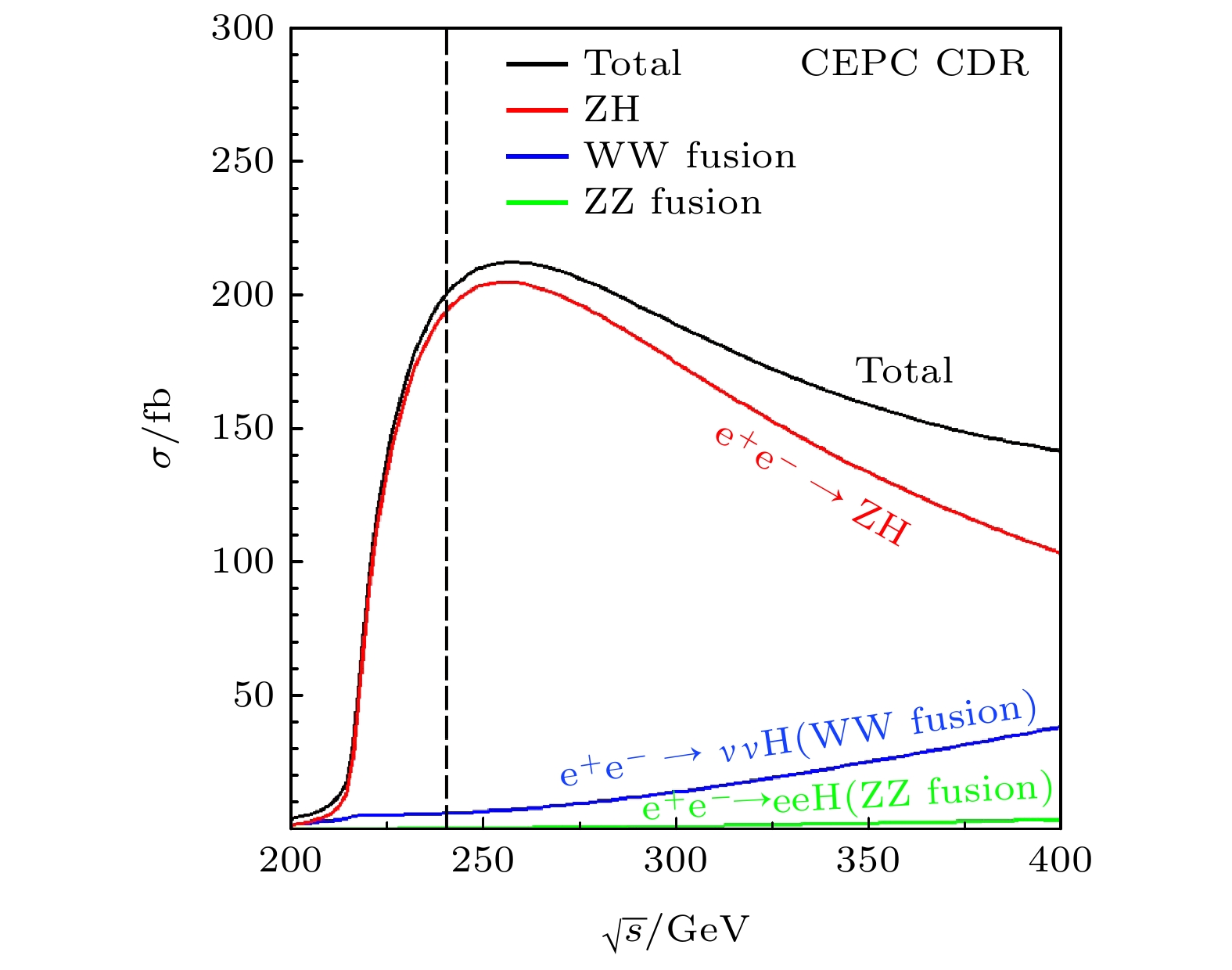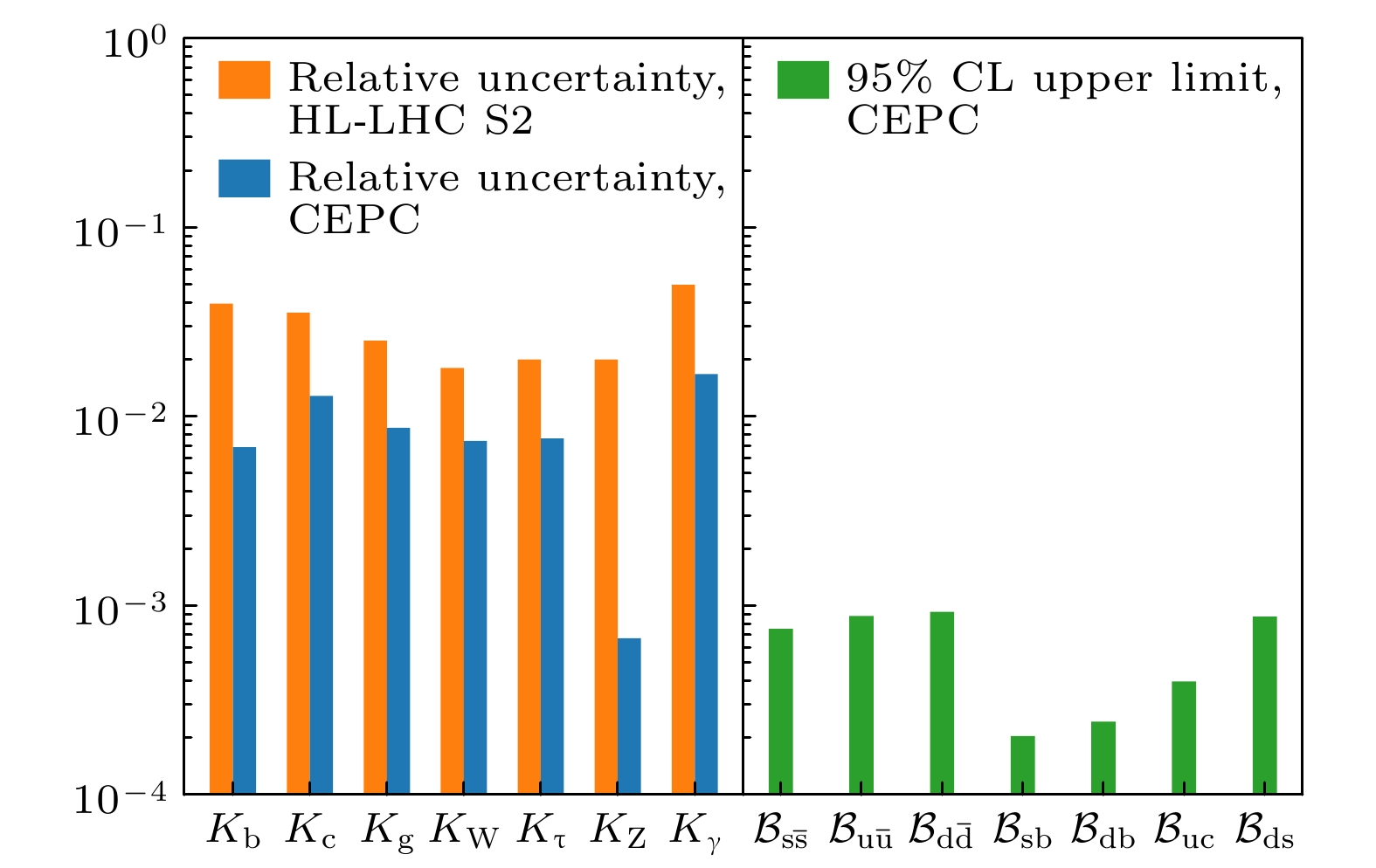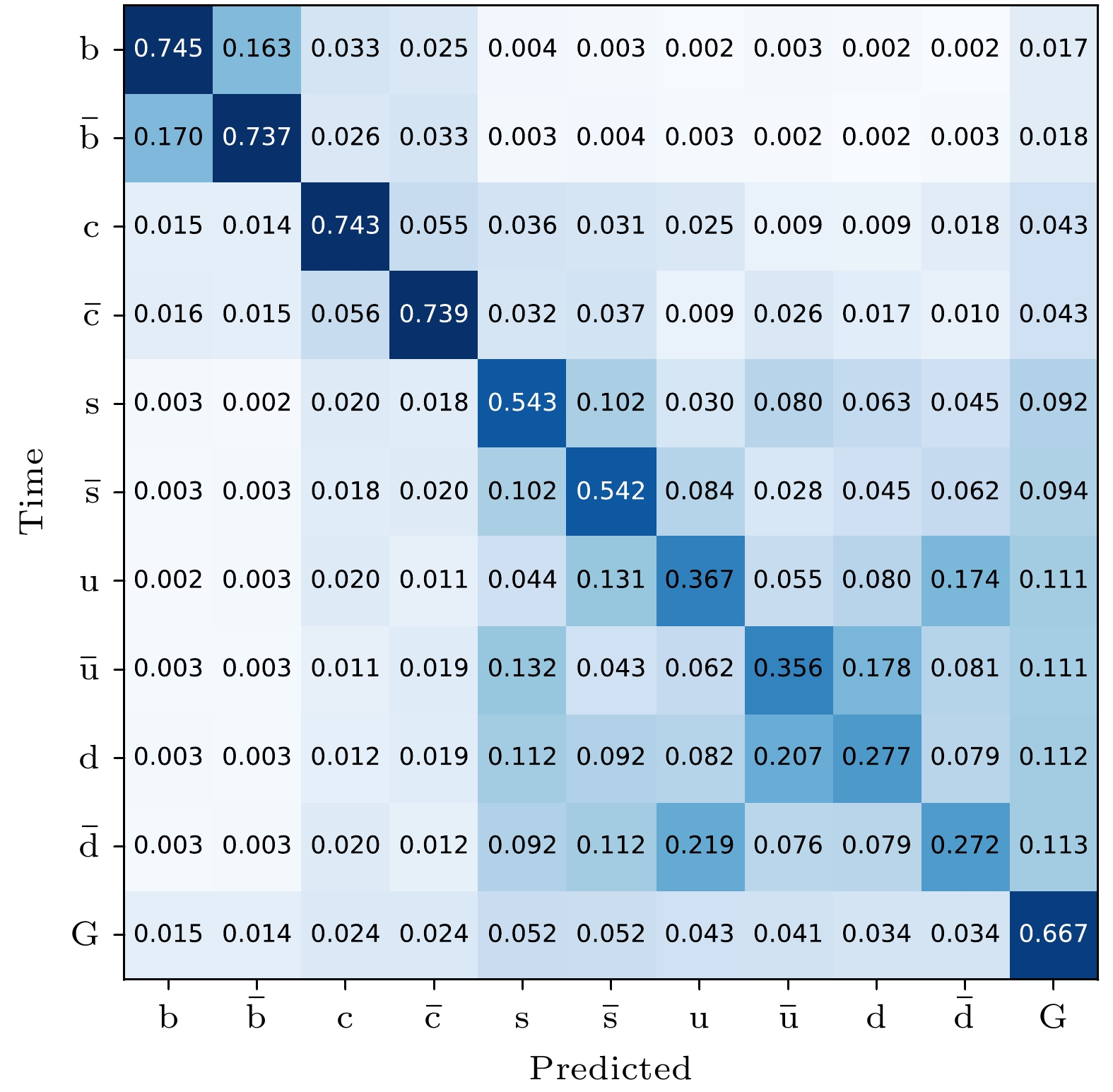-
This article reviews the discovery of the Higgs boson, discusses the studies of its properties, and introduces the physical prospects of the future Higgs factories. The greatest goal of particle physics is to understand the fundamental particles of the universe and how they interact with each other (or more generally, how the universe operates). In the standard model of particle phyiscs, the Higgs mechanism is proposed to explain the origin of elementary particle mass and predict the existence of the Higgs boson. Higgs physics is one of the most important research areas in particle physics. The Large Hadron Collider (LHC) at CERN (Geneva, Switzerland) accelerates proton beams to collide at center-of-mass energy of 13 TeV, thus defining the world’s energy frontier. The ATLAS and CMS detectors are two general-purpose detectors at the LHC for studying the debris from the collisions. The Higgs boson was discovered in the ATLAS and CMS experiments in 2012. This discovery completed the fundamental particle spectrum of the standard model and was an important milestone for particle physics. Since then, many studies have been conducted on the properties of Higgs boson, including spin, mass and couplings, to deepen our understanding of the Higgs mechanism. In particular, the Higgs boson couplings to fermions and to themselves present new kinds of fundamental interactions with paramount significance, which have not been fully confirmed. Additionally, the Higgs bosons has become an important tool to search for dark matter, heavy resonance, and other new physical phenomena. So far, there has been no deviation from the predictions of the standard model. Looking forward to the future, it is proposed to use the electron-positron collisions to study the Higgs boson in more depth. Physics studies have shown that these Higgs factories can significantly improve the accuracy of many properties of the Higgs boson, including width and couplings, and provide great physics prospects.
-
Keywords:
- standard model /
- electroweak symmetry breaking /
- Higgs boson
[1] Higgs P W 1964 Phys. Lett. 12 132
 Google Scholar
Google Scholar
[2] Higgs P W 1964 Phys. Rev. Lett. 13 508
 Google Scholar
Google Scholar
[3] Englert F, Brout R 1964 Phys. Rev. Lett. 13 321
 Google Scholar
Google Scholar
[4] Guralnik G S, Hagen C R, Kibble T W B 1964 Phys. Rev. Lett. 13 585
 Google Scholar
Google Scholar
[5] Alam M, Katayama N, Kim I J, et al. 1989 Phys. Rev. D 40 712
 Google Scholar
Google Scholar
[6] Egli S, et al. (SINDRUM Collaboration) 1989 Phys. Lett. B 222 533
 Google Scholar
Google Scholar
[7] ALEPH Collaboration, DELPHI Collaboration, L3 Collaboration, et al. 2003 Phys. Lett. B 565 61
 Google Scholar
Google Scholar
[8] Aaltonen T, et al. (CDF Collaboration, D0 Collaboration) 2012 Phys. Rev. Lett. 109 071804
 Google Scholar
Google Scholar
[9] Aad G, et al. (ATLAS Collaboration) 2012 Phys. Lett. B 716 1
 Google Scholar
Google Scholar
[10] Chatrchyan S, et al. (CMS Collaboration) 2012 Phys. Lett. B 716 30
 Google Scholar
Google Scholar
[11] Aad G, et al. (ATLAS Collaboration) 2022 Nature 607 52
 Google Scholar
Google Scholar
[12] Tumasyan A, et al. (CMS Collaboration) 2022 Nature 607 60
 Google Scholar
Google Scholar
[13] Sirunyan A M, et al. (CMS Collaboration) 2020 Phys. Lett. B 805 135425
 Google Scholar
Google Scholar
[14] Tumasyan A, et al. (CMS Collaboration) 2022 Nat. Phys. 18 1329
 Google Scholar
Google Scholar
[15] Aad G, et al. (ATLAS Collaboration) 2023 Phys. Rev. Lett. 131 251802
 Google Scholar
Google Scholar
[16] Aad G, et al. (ATLAS Collaboration) 2023 Phys. Lett. B 846 138223
 Google Scholar
Google Scholar
[17] Khachatryan V, et al. (CMS Collaboration) 2015 Phys. Rev. D 92 012004
 Google Scholar
Google Scholar
[18] Aad G, et al. (ATLAS Collaboration) 2015 Eur. Phys. J. C 75 476
 Google Scholar
Google Scholar
[19] Aaboud M, et al. (ATLAS Collaboration) 2018 Phys. Lett. B 784 173
 Google Scholar
Google Scholar
[20] Sirunyan A M, et al. (CMS Collaboration) 2018 Phys. Rev. Lett. 120 231801
 Google Scholar
Google Scholar
[21] Sirunyan A M, et al. (CMS Collaboration) 2021 J. High Energy Phys. 01 148
 Google Scholar
Google Scholar
[22] Aad G, et al. (ATLAS Collaboration) 2021 Phys. Lett. B 812 135980
 Google Scholar
Google Scholar
[23] Degrassi G, Di Vita S, Elias-Miro J, Espinosa J R, Giudice G F, Isidori G, Strumia A 2012 J. High Energy Phys. 2012 98
 Google Scholar
Google Scholar
[24] Sirunyan A M, et al. (CMS Collaboration) 2018 Phys. Lett. B 779 283
 Google Scholar
Google Scholar
[25] Aaboud M, et al. (ATLAS Collaboration) 2019 Phys. Rev. D 99 072001
 Google Scholar
Google Scholar
[26] Aaboud M, et al. (ATLAS Collaboration) 2018 Phys. Lett. B 786 59
 Google Scholar
Google Scholar
[27] Sirunyan A M, et al. (CMS Collaboration) 2018 Phys. Rev. Lett. 121 121801
 Google Scholar
Google Scholar
[28] Sirunyan A M, et al. (CMS Collaboration) 2023 Phys. Rev. Lett. 131 061801
 Google Scholar
Google Scholar
[29] Aad G, et al. (ATLAS Collaboration) 2022 Eur. Phys. J. C 82 717
 Google Scholar
Google Scholar
[30] Mohr P J, Newell D B, Taylor B N 2016 Rev. Mod. Phys. 88 035009
 Google Scholar
Google Scholar
[31] Aad G, et al. (ATLAS Collaboration) 2024 Phys. Rev. Lett. 133 101801
 Google Scholar
Google Scholar
[32] Aad G, et al. (ATLAS Collaboration) 2020 Phys. Rev. D 101 012002
 Google Scholar
Google Scholar
[33] Aad G, et al. (ATLAS Collaboration, CMS Collaboration) 2024 Phys. Rev. Lett. 132 021803
 Google Scholar
Google Scholar
[34] Cao Q H, Xu L X, Yan B, Zhu S H 2019 Phys. Lett. B 789 233
 Google Scholar
Google Scholar
[35] Andersen J R, et al. (LHC Higgs Cross Section Working Group) 2013 arXiv: 1307.1347 [hep-ph]
[36] Aad G, et al. (ATLAS Collaboration) 2024 arXiv: 2402.05742 [hep-ex]
[37] CMS Collaboration 2020 Combined Higgs Boson Production and Decay Measurements with up to 137fb-1 of Proton-proton Collision Data at $ \sqrt s$ = 13 TeV Report number: CMS-PAS-HIG-19-005
[38] Sirunyan A M, et al. (CMS Collaboration) 2017 J. High Energy Phys. 2017 47
 Google Scholar
Google Scholar
[39] de Florian D, Grojean C, Maltoni F, Mariotti C, Nikitenko A, Pieri M, Savard P, Schumacher M, Tanaka R 2017 Handbook of LHC Higgs Cross Sections: 4. Deciphering the Nature of the Higgs Sector Report number: CERN-2017-002-M
[40] Tumasyan A, et al. (CMS Collaboration) 2023 Phys. Rev. D 108 032013
 Google Scholar
Google Scholar
[41] Sirunyan A M, et al. (CMS Collaboration) 2020 Phys. Rev. Lett. 125 061801
 Google Scholar
Google Scholar
[42] Tumasyan A, et al. (CMS Collaboration) 2022 J. High Energy Phys. 2022 12
 Google Scholar
Google Scholar
[43] Aad G, et al. (ATLAS Collaboration) 2023 Eur. Phys. J. C 83 563
 Google Scholar
Google Scholar
[44] Aad G, et al. (ATLAS Collaboration) 2020 Phys. Rev. Lett. 125 061802
 Google Scholar
Google Scholar
[45] Arbey A, Mahmoudi F 2021 Prog. Part. Nucl. Phys. 119 103865
 Google Scholar
Google Scholar
[46] Ward E 2019 LHC Detector Transverse Cross-section (ATLAS Experiment) ATLAS-PHOTO-2019-01
[47] Carpenter L, DiFranzo A, Mulhearn M, Shimmin C, Tulin S, Whiteson D 2014 Phys. Rev. D 89 075017
 Google Scholar
Google Scholar
[48] Aaboud M, et al. (ATLAS Collaboration) 2019 J. High Energy Phys. 2019 142
 Google Scholar
Google Scholar
[49] Hayrapetyan A, et al. (CMS Collaboration) 2024 arXiv: 2403.16926 [hep-ex]
[50] Lee T D 1973 Phys. Rev. D 8 1226
 Google Scholar
Google Scholar
[51] Branco G, Ferreira P, Lavoura L, Rebelo M, Sher M, Silva J P 2012 Phys. Rep. 516 1
 Google Scholar
Google Scholar
[52] Haber H E, Stål O 2015 Eur. Phys. J. C 75 491
 Google Scholar
Google Scholar
[53] Kling F, No J M, Su S 2016 J. High Energy Phys. 2016 93
 Google Scholar
Google Scholar
[54] Chalons G, Domingo F 2012 Phys. Rev. D 86 115024
 Google Scholar
Google Scholar
[55] Chen C Y, Freid M, Sher M 2014 Phys. Rev. D 89 075009
 Google Scholar
Google Scholar
[56] Muhlleitner M, Sampaio M O P, Santos R, Wittbrodt J 2017 J. High Energy Phys. 2017 94
 Google Scholar
Google Scholar
[57] Robens T, Stefaniak T, Wittbrodt J 2020 Eur. Phys. J. C 80 151
 Google Scholar
Google Scholar
[58] Gunion J F, Haber H E 1986 Nucl. Phys. B 272 1
 Google Scholar
Google Scholar
[59] Gunion J F, Haber H E 1986 Nucl. Phys. B 278 449
 Google Scholar
Google Scholar
[60] Degrassi G, Heinemeyer S, Hollik W, Slavich P, Weiglein G 2003 Eur. Phys. J. C 28 133
 Google Scholar
Google Scholar
[61] Djouadi A 2008 Phys. Rep. 459 1
 Google Scholar
Google Scholar
[62] Giudice G F, Rattazzi R, Wells J D 2001 Nucl. Phys. B 595 250
 Google Scholar
Google Scholar
[63] Pappadopulo D, Thamm A, Torre R, Wulzer A 2014 J. High Energy Phys. 2014 60
 Google Scholar
Google Scholar
[64] Tumasyan A, et al. (CMS Collaboration) 2023 J. High Energy Phys. 2023 73
 Google Scholar
Google Scholar
[65] Sirunyan A M, et al. (CMS Collaboration) 2020 J. High Energy Phys. 2020 171 [Erratum: 2022 J. High Energy Phys. 2022 187]
[66] Sirunyan A M, et al. (CMS Collaboration) 2020 J. High Energy Phys. 2020 34
 Google Scholar
Google Scholar
[67] Sirunyan A M, et al. (CMS Collaboration) 2020 J. High Energy Phys. 2020 65
 Google Scholar
Google Scholar
[68] Sirunyan A M, et al. (CMS Collaboration) 2019 Eur. Phys. J. C 79 421
 Google Scholar
Google Scholar
[69] Zhu Y, Cui H, Ruan M 2022 J. High Energy Phys. 11 100
 Google Scholar
Google Scholar
[70] An F, Bai Y, Chen C H, et al. 2019 Chin. Phys. C 43 043002
 Google Scholar
Google Scholar
[71] Aryshev A, Behnke T, Berggren M, et al. 2022 arXiv: 2203.07622 [physics.acc-ph]
[72] Linssen L, Miyamoto A, Stanitzki M, Weerts H 2012 arXiv: 1202.5940 [physics.ins-det]
[73] Dong M, et al. (CEPC Study Group) 2018 arXiv: 1811.10545 [hep-ex]
[74] Agapov I, Benedikt M, Blondel A, et al. 2022 arXiv: 2203.08310 [physics.acc-ph]
[75] Cheng H, Chiu W H, Fang Y Q, et al. 2022 arXiv: 2205.08553 [hep-ph]
[76] Liang H, Zhu Y, Wang Y, Che Y, Zhou C, Qu H, Ruan M 2024 Phys. Rev. Lett. 132 221802
 Google Scholar
Google Scholar
[77] Qu H, Gouskos L 2020 Phys. Rev. D 101 056019
 Google Scholar
Google Scholar
[78] Suehara T, Tanabe T 2016 Nucl. Instrum. Meth. A 808 109
 Google Scholar
Google Scholar
[79] Cui H, Zhao M, Wang Y, Liang H, Ruan M 2024 J. High Energy Phys. 2024 210 [Erratum: 2024 J. High Energy Phys. 2024 5, Erratum: 2024 J. High Energy Phys. 2024 119 ]
[80] Cepeda M, Gori S, Ilten P, et al. 2019 arXiv: 1902.00134 [hep-ph]
-
图 8 ATLAS实验组获得的$ {\rm{t}}{\bar {\rm{t}}}{\rm{H}} $产生过程候选事例三维展示图, 在事例中, 探测器下部有两个孤立的光子(绿色), 共产生六个喷注(黄色锥形), 包括一个B-标记喷柱(蓝色锥形)[19]
Figure 8. Three-dimensional (3D) display of a candidate event of $ {\rm{t}}{\bar {\rm{t}}}{\rm{H}} $ production mode from ATLAS. The event has the two isolated photons (green line below the detector) and six jets (yellow cone), including one B-tagged jet (blue cone).
图 11 希格斯玻色子对和三希格斯玻色子末态的费曼图, 左图为希格斯玻色子对过程, 蓝色圈代表三希格斯玻色子自耦合顶点$ \lambda_3 $, 右图为三希格斯玻色子产生过程, 红色圈代表四希格斯玻色子自耦合顶点$ \lambda_4 $
Figure 11. The Feynman diagram of the Higgs boson pair and triple Higgs final state, the left picture is the Higgs boson pair process, the blue circle represents the three Higgs Boson self-coupling vertex $ \lambda_3 $, the right picture is the triple Higgs boson production process, the red circle represents the quartic Higgs Boson self-coupling vertex $ \lambda_4 $.
图 18 二期运行期间ATLAS和CMS组统计合并测量希格斯玻色子衰变到Z玻色子和一个光子的信号强度结果[33]
Figure 18. Combined measurement of the signal strength for Higgs boson decay into a Z boson and a photon by the ATLAS and CMS collaborations during Run II.
图 20 一期运行多个衰变道数据合并中, 标准模型与$ 2^+ $的自旋假设的比较, 其中左图为CMS实验结果[17]; 右图为ATLAS实验结果[18]
Figure 20. Comparison of the standard model with the $ 2^+ $ spin assumption with the combination of multiple decay channels in Run I. Left: results from the CMS experiment[17]. Right: results from the ATLAS experiment[18].
图 21 LHC实验对暗物质粒子的探测示意图[46], 暗物质对探测器不可见, LHC实验通过计算所有可见物质的横向动量和来推算缺失动量, 从而搜寻潜在的暗物质信号
Figure 21. An illustration of the LHC experiment’s search for dark matter particles[46], which are invisible to the detector. The search for potential dark matter signals is conducted by calculating the transverse momentum of all visible matter and inferring the missing transverse momentum.
图 23 ATLAS合作组分析mono-Higgs信号得到的排除轮廓[48], 合并了$ {\rm{b}}\bar{\rm{b}} $和$ \gamma\gamma $希格斯玻色子衰变道的分析结果. 黑色虚线表示仅有标准模型背景假设下的预期轮廓, 绿带为1σ误差范围, 黑色实线为观测轮廓. 灰色虚线为动力学限制, 即$ m_{{\mathrm{Z}}'_{\mathrm{B}}} = 2 m_{\text{χ}}$
Figure 23. Exclusion contours obtained by the ATLAS collaboration analyzing the mono-Higgs signal[48], combining results from the Higgs boson decay channels of $ {\rm{b}}\bar{\rm{b}} $ and $ \gamma\gamma $. The black dashed line represents the expected contour under the assumption of only the standard model background, with the green band indicating the 1σ error range, and the black solid line representing the observed contour. The grey dashed line represents a kinematic constraint, namely $ m_{{\mathrm{Z'_B}}} = 2 m_{\text{χ}} $.
图 24 胶子融合产生希格斯玻色子对的领头阶费曼图[49]. 左图和中图: 非共振态粒子产生希格斯玻色子的三角图和盒形图, 其符合标准模型. 右图: 通过一个新共振粒子产生的希格斯玻色子费曼图, 其中新共振粒子用X表示
Figure 24. Leading order Feynman diagrams of Higgs boson pair production via gluon fusion[49]. Left and middle: the triangle and box diagrams, respectively for nonresonant H production, as expected from the SM. Right: diagram for H boson production through a new resonance of labeled as X
图 25 自旋为0的共振态粒子$ {\rm{X}}\rightarrow {\rm{HH}} $的产生截面与衰变分支比乘积$ {\sigma {\cal{B}}} $在95%置信水平下的上限结果[49]. 其中实线表示观察到的结果, 虚线表示的是期望结果
Figure 25. Search for $ {\rm{X}}\rightarrow {\rm{HH}} $: Observed and expected 95% CL upper limits on the product of the cross section for the production of a spin-0 resonance X and the branching fraction for the corresponding HH decay[49]. The observed limits are indicated by markers connected with solid lines and the expected limits by dashed lines.
图 26 hMSSM模型对$ {\rm{X}}\rightarrow {\rm{HH}} $的寻找结果的诠释[49]. 图中展示了在$ (m_{\rm{A}}, \, \tan\beta) $平面上, HH的联合分析在95%置信水平下观察到的和预期的排除区域, 并将其与hMSSM模型中重标量粒子衰变为$ \tau\tau $[64], tt[65]和WW[66]的寻找结果进行了对比. 此外, 还给出了$ {\rm{A}}\rightarrow {\rm{ZH}} $的一个代表性寻找结果[67], 以及通过测量希格斯玻色子耦合强度给出的间接约束[68]
Figure 26. Interpretation of the results from the searches for the $ {\rm{X}}\rightarrow {\rm{HH}} $ decay, in the hMSSM model[49]. The observed and expected exclusion contours at 95% CL, in the $ (m_{\rm{A}}, \tan \beta) $ plane from the combined likelihood analysis of HH analyses are shown. A comparison of the region excluded by the combined likelihood analysis shown in this panel with selected results from other searches for the production of heavy scalar bosons in the hMSSM, in $ \tau\tau $[64], tt[65] and WW[66] decays is shown. Also shown, are the results from one representative search for A → ZH[67] and indirect constraints obtained from measurements of the coupling strength of the observed H boson[68].
图 32 用喷注本源鉴别算法得到的Higgs稀有衰变以及奇异衰变的分支比上限, 如绿色柱状图所示[76]. CEPC (蓝色柱状图)[75]和高亮度大型强子对撞机(橙色柱状图)[80]预期的Higgs耦合的相对不确定度
Figure 32. Expected upper limits on the branching ratios of rare Higgs boson decays (green bars)[76] and the relative uncertainties of Higgs couplings anticipated at CEPC (blue)[75] and HL-LHC (orange)[80].
图 29 经过CEPC基线探测器[73]模拟的对撞能量为$ 240\, $ GeV的$ { {\rm{e}}^+{\rm{e}}^-} \to\nu\bar{\nu} {{\rm{H}}} \to\nu\bar{\nu} {\rm{gg}} $事例样本[76]
Figure 29. Event display of an $ { {\rm{e}}^+{\rm{e}}^-} \to\nu\bar{\nu} {{\rm{H}}} \to\nu\bar{\nu} {\rm{gg}} $ ($ \sqrt{s} = $$ 240\; {\rm{GeV}} $) event[76] simulated and reconstructed with the CEPC baseline detector[73].
图 30 正负电子对撞能量为240 GeV时, 利用CEPC基线探测器全模拟的$ \nu\bar{\nu} {\rm{H}}, {\rm{H}}\to {\rm{jj}} $样本, 基于ParticleNet深度学习模型训练, 在测试数据上得到的喷注味道鉴别矩阵[76]
Figure 30. Confusion matrix $ M_{11} $ based on full simulated $ \nu\bar{\nu}{\rm{H}} $, $ {\rm{H}}\to {\rm{jj}} $ at 240 GeV center-of-mass energy at CEPC baseline detector[76].
-
[1] Higgs P W 1964 Phys. Lett. 12 132
 Google Scholar
Google Scholar
[2] Higgs P W 1964 Phys. Rev. Lett. 13 508
 Google Scholar
Google Scholar
[3] Englert F, Brout R 1964 Phys. Rev. Lett. 13 321
 Google Scholar
Google Scholar
[4] Guralnik G S, Hagen C R, Kibble T W B 1964 Phys. Rev. Lett. 13 585
 Google Scholar
Google Scholar
[5] Alam M, Katayama N, Kim I J, et al. 1989 Phys. Rev. D 40 712
 Google Scholar
Google Scholar
[6] Egli S, et al. (SINDRUM Collaboration) 1989 Phys. Lett. B 222 533
 Google Scholar
Google Scholar
[7] ALEPH Collaboration, DELPHI Collaboration, L3 Collaboration, et al. 2003 Phys. Lett. B 565 61
 Google Scholar
Google Scholar
[8] Aaltonen T, et al. (CDF Collaboration, D0 Collaboration) 2012 Phys. Rev. Lett. 109 071804
 Google Scholar
Google Scholar
[9] Aad G, et al. (ATLAS Collaboration) 2012 Phys. Lett. B 716 1
 Google Scholar
Google Scholar
[10] Chatrchyan S, et al. (CMS Collaboration) 2012 Phys. Lett. B 716 30
 Google Scholar
Google Scholar
[11] Aad G, et al. (ATLAS Collaboration) 2022 Nature 607 52
 Google Scholar
Google Scholar
[12] Tumasyan A, et al. (CMS Collaboration) 2022 Nature 607 60
 Google Scholar
Google Scholar
[13] Sirunyan A M, et al. (CMS Collaboration) 2020 Phys. Lett. B 805 135425
 Google Scholar
Google Scholar
[14] Tumasyan A, et al. (CMS Collaboration) 2022 Nat. Phys. 18 1329
 Google Scholar
Google Scholar
[15] Aad G, et al. (ATLAS Collaboration) 2023 Phys. Rev. Lett. 131 251802
 Google Scholar
Google Scholar
[16] Aad G, et al. (ATLAS Collaboration) 2023 Phys. Lett. B 846 138223
 Google Scholar
Google Scholar
[17] Khachatryan V, et al. (CMS Collaboration) 2015 Phys. Rev. D 92 012004
 Google Scholar
Google Scholar
[18] Aad G, et al. (ATLAS Collaboration) 2015 Eur. Phys. J. C 75 476
 Google Scholar
Google Scholar
[19] Aaboud M, et al. (ATLAS Collaboration) 2018 Phys. Lett. B 784 173
 Google Scholar
Google Scholar
[20] Sirunyan A M, et al. (CMS Collaboration) 2018 Phys. Rev. Lett. 120 231801
 Google Scholar
Google Scholar
[21] Sirunyan A M, et al. (CMS Collaboration) 2021 J. High Energy Phys. 01 148
 Google Scholar
Google Scholar
[22] Aad G, et al. (ATLAS Collaboration) 2021 Phys. Lett. B 812 135980
 Google Scholar
Google Scholar
[23] Degrassi G, Di Vita S, Elias-Miro J, Espinosa J R, Giudice G F, Isidori G, Strumia A 2012 J. High Energy Phys. 2012 98
 Google Scholar
Google Scholar
[24] Sirunyan A M, et al. (CMS Collaboration) 2018 Phys. Lett. B 779 283
 Google Scholar
Google Scholar
[25] Aaboud M, et al. (ATLAS Collaboration) 2019 Phys. Rev. D 99 072001
 Google Scholar
Google Scholar
[26] Aaboud M, et al. (ATLAS Collaboration) 2018 Phys. Lett. B 786 59
 Google Scholar
Google Scholar
[27] Sirunyan A M, et al. (CMS Collaboration) 2018 Phys. Rev. Lett. 121 121801
 Google Scholar
Google Scholar
[28] Sirunyan A M, et al. (CMS Collaboration) 2023 Phys. Rev. Lett. 131 061801
 Google Scholar
Google Scholar
[29] Aad G, et al. (ATLAS Collaboration) 2022 Eur. Phys. J. C 82 717
 Google Scholar
Google Scholar
[30] Mohr P J, Newell D B, Taylor B N 2016 Rev. Mod. Phys. 88 035009
 Google Scholar
Google Scholar
[31] Aad G, et al. (ATLAS Collaboration) 2024 Phys. Rev. Lett. 133 101801
 Google Scholar
Google Scholar
[32] Aad G, et al. (ATLAS Collaboration) 2020 Phys. Rev. D 101 012002
 Google Scholar
Google Scholar
[33] Aad G, et al. (ATLAS Collaboration, CMS Collaboration) 2024 Phys. Rev. Lett. 132 021803
 Google Scholar
Google Scholar
[34] Cao Q H, Xu L X, Yan B, Zhu S H 2019 Phys. Lett. B 789 233
 Google Scholar
Google Scholar
[35] Andersen J R, et al. (LHC Higgs Cross Section Working Group) 2013 arXiv: 1307.1347 [hep-ph]
[36] Aad G, et al. (ATLAS Collaboration) 2024 arXiv: 2402.05742 [hep-ex]
[37] CMS Collaboration 2020 Combined Higgs Boson Production and Decay Measurements with up to 137fb-1 of Proton-proton Collision Data at $ \sqrt s$ = 13 TeV Report number: CMS-PAS-HIG-19-005
[38] Sirunyan A M, et al. (CMS Collaboration) 2017 J. High Energy Phys. 2017 47
 Google Scholar
Google Scholar
[39] de Florian D, Grojean C, Maltoni F, Mariotti C, Nikitenko A, Pieri M, Savard P, Schumacher M, Tanaka R 2017 Handbook of LHC Higgs Cross Sections: 4. Deciphering the Nature of the Higgs Sector Report number: CERN-2017-002-M
[40] Tumasyan A, et al. (CMS Collaboration) 2023 Phys. Rev. D 108 032013
 Google Scholar
Google Scholar
[41] Sirunyan A M, et al. (CMS Collaboration) 2020 Phys. Rev. Lett. 125 061801
 Google Scholar
Google Scholar
[42] Tumasyan A, et al. (CMS Collaboration) 2022 J. High Energy Phys. 2022 12
 Google Scholar
Google Scholar
[43] Aad G, et al. (ATLAS Collaboration) 2023 Eur. Phys. J. C 83 563
 Google Scholar
Google Scholar
[44] Aad G, et al. (ATLAS Collaboration) 2020 Phys. Rev. Lett. 125 061802
 Google Scholar
Google Scholar
[45] Arbey A, Mahmoudi F 2021 Prog. Part. Nucl. Phys. 119 103865
 Google Scholar
Google Scholar
[46] Ward E 2019 LHC Detector Transverse Cross-section (ATLAS Experiment) ATLAS-PHOTO-2019-01
[47] Carpenter L, DiFranzo A, Mulhearn M, Shimmin C, Tulin S, Whiteson D 2014 Phys. Rev. D 89 075017
 Google Scholar
Google Scholar
[48] Aaboud M, et al. (ATLAS Collaboration) 2019 J. High Energy Phys. 2019 142
 Google Scholar
Google Scholar
[49] Hayrapetyan A, et al. (CMS Collaboration) 2024 arXiv: 2403.16926 [hep-ex]
[50] Lee T D 1973 Phys. Rev. D 8 1226
 Google Scholar
Google Scholar
[51] Branco G, Ferreira P, Lavoura L, Rebelo M, Sher M, Silva J P 2012 Phys. Rep. 516 1
 Google Scholar
Google Scholar
[52] Haber H E, Stål O 2015 Eur. Phys. J. C 75 491
 Google Scholar
Google Scholar
[53] Kling F, No J M, Su S 2016 J. High Energy Phys. 2016 93
 Google Scholar
Google Scholar
[54] Chalons G, Domingo F 2012 Phys. Rev. D 86 115024
 Google Scholar
Google Scholar
[55] Chen C Y, Freid M, Sher M 2014 Phys. Rev. D 89 075009
 Google Scholar
Google Scholar
[56] Muhlleitner M, Sampaio M O P, Santos R, Wittbrodt J 2017 J. High Energy Phys. 2017 94
 Google Scholar
Google Scholar
[57] Robens T, Stefaniak T, Wittbrodt J 2020 Eur. Phys. J. C 80 151
 Google Scholar
Google Scholar
[58] Gunion J F, Haber H E 1986 Nucl. Phys. B 272 1
 Google Scholar
Google Scholar
[59] Gunion J F, Haber H E 1986 Nucl. Phys. B 278 449
 Google Scholar
Google Scholar
[60] Degrassi G, Heinemeyer S, Hollik W, Slavich P, Weiglein G 2003 Eur. Phys. J. C 28 133
 Google Scholar
Google Scholar
[61] Djouadi A 2008 Phys. Rep. 459 1
 Google Scholar
Google Scholar
[62] Giudice G F, Rattazzi R, Wells J D 2001 Nucl. Phys. B 595 250
 Google Scholar
Google Scholar
[63] Pappadopulo D, Thamm A, Torre R, Wulzer A 2014 J. High Energy Phys. 2014 60
 Google Scholar
Google Scholar
[64] Tumasyan A, et al. (CMS Collaboration) 2023 J. High Energy Phys. 2023 73
 Google Scholar
Google Scholar
[65] Sirunyan A M, et al. (CMS Collaboration) 2020 J. High Energy Phys. 2020 171 [Erratum: 2022 J. High Energy Phys. 2022 187]
[66] Sirunyan A M, et al. (CMS Collaboration) 2020 J. High Energy Phys. 2020 34
 Google Scholar
Google Scholar
[67] Sirunyan A M, et al. (CMS Collaboration) 2020 J. High Energy Phys. 2020 65
 Google Scholar
Google Scholar
[68] Sirunyan A M, et al. (CMS Collaboration) 2019 Eur. Phys. J. C 79 421
 Google Scholar
Google Scholar
[69] Zhu Y, Cui H, Ruan M 2022 J. High Energy Phys. 11 100
 Google Scholar
Google Scholar
[70] An F, Bai Y, Chen C H, et al. 2019 Chin. Phys. C 43 043002
 Google Scholar
Google Scholar
[71] Aryshev A, Behnke T, Berggren M, et al. 2022 arXiv: 2203.07622 [physics.acc-ph]
[72] Linssen L, Miyamoto A, Stanitzki M, Weerts H 2012 arXiv: 1202.5940 [physics.ins-det]
[73] Dong M, et al. (CEPC Study Group) 2018 arXiv: 1811.10545 [hep-ex]
[74] Agapov I, Benedikt M, Blondel A, et al. 2022 arXiv: 2203.08310 [physics.acc-ph]
[75] Cheng H, Chiu W H, Fang Y Q, et al. 2022 arXiv: 2205.08553 [hep-ph]
[76] Liang H, Zhu Y, Wang Y, Che Y, Zhou C, Qu H, Ruan M 2024 Phys. Rev. Lett. 132 221802
 Google Scholar
Google Scholar
[77] Qu H, Gouskos L 2020 Phys. Rev. D 101 056019
 Google Scholar
Google Scholar
[78] Suehara T, Tanabe T 2016 Nucl. Instrum. Meth. A 808 109
 Google Scholar
Google Scholar
[79] Cui H, Zhao M, Wang Y, Liang H, Ruan M 2024 J. High Energy Phys. 2024 210 [Erratum: 2024 J. High Energy Phys. 2024 5, Erratum: 2024 J. High Energy Phys. 2024 119 ]
[80] Cepeda M, Gori S, Ilten P, et al. 2019 arXiv: 1902.00134 [hep-ph]
Catalog
Metrics
- Abstract views: 5835
- PDF Downloads: 217
- Cited By: 0















 DownLoad:
DownLoad:
